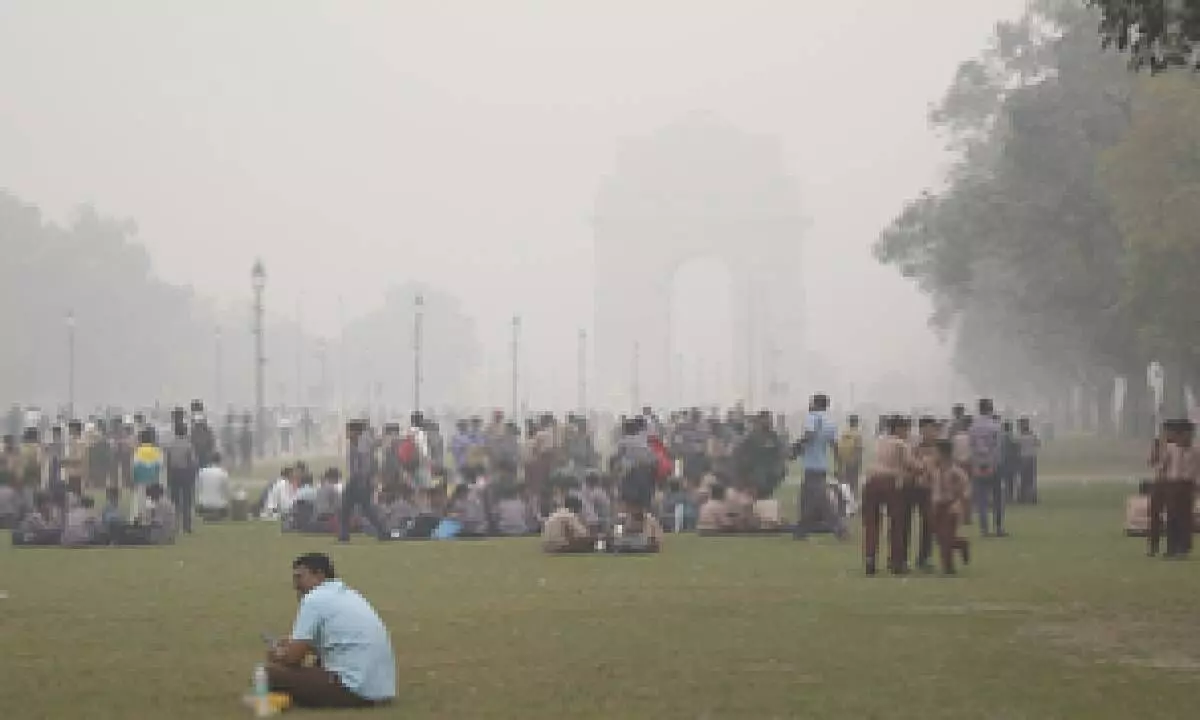States across Indo-Gangetic plains have to work together: US expert
Any solution to air pollution needs an airshed-level approach, as pollution is not restricted to geopolitical boundaries. Only about 40 per cent of Delhi’s pollution is estimated to actually originate from the national Capital, so it’s not possible to solve the problem through Delhi's efforts alone.
image for illustrative purpose

New Delhi, Nov 11 Any solution to air pollution needs an airshed-level approach, as pollution is not restricted to geopolitical boundaries. Only about 40 per cent of Delhi’s pollution is estimated to actually originate from the national Capital, so it’s not possible to solve the problem through Delhi's efforts alone.
These were the views expressed by Christa Hasenkopf, Director of Air Quality Life Index (AQLI) and Air Quality Programs at the Energy Policy Institute at the University of Chicago (EPIC).
In a virtual interview with IANS from Munich, the atmospheric scientist said any solution will absolutely require attacking the sources of pollution, as opposed to vacuuming or diluting pollution once it is emitted.
“It will also need an airshed approach, requiring cities and states to coordinate policy, monitoring, and enforcement. For example, only about 40 per cent of Delhi’s air pollution is estimated to actually originate from Delhi, so it’s not possible to solve the problem through Delhi’s efforts alone. The issue -- and the solution -- has to be viewed through regional, national and even international lenses.”
Christa, co-founder of OpenAQ, the first open-source, open air-quality data platform for the world, said life expectancy has changed as a result of air pollution over a long period of time, particularly due to PM2.5 which is a fine inhalable air pollutant.
“From 2000 to 2021 (our latest year of data), PM2.5 pollution levels in India rose 55 per cent. We estimate that this increase could reduce average life expectancy by 2.1 years compared to levels at the turn of the century, which were already almost six times the World Health Organisation guidelines.”
Responding to the question of how she sees pollution or life expectancy impacts at a very local level in India, Christa said, “The impact of pollution on life expectancy varies considerably across India. For example, the most polluted district-level air (in terms of annual average PM2.5 levels) in Tamil Nadu is cleaner than the cleanest district-level air to be found in West Bengal by a considerable margin. “Meanwhile, across the world, the 77 most PM2.5-polluted districts are all in India and largely across the Indo-Gangetic Plain.”
She added, “If PM2.5 pollution levels dropped by 50 per cent across India, we estimate that average life expectancy could increase by 2.9 years.”
On the need to adapt to airshed management, Christa told IANS it is a wise move to view air pollution policy in the lens of airshed management.
“The nature of the issue is that it isn’t under the purview of a single city or even state to solve. It requires long-term coordination across an entire region. Otherwise, a lot of effort can be expended for not a lot of results,” she said.
PM2.5 concentrations in villages and towns in the Indo-Gangetic Plain are often similar to or higher than those in nearby big cities, indicating air quality management cannot be restricted to cities.
PM stands for particulate matter, also called particle pollution -- a mixture of solid particles and liquid droplets found in the air and they can only be detected using an electron microscope.
The national Capital and its adjoining areas including Noida, Greater Noida, Gurugram, Faridabad and Ghaziabad are struggling with air pollution during winters. Normally, the air quality in the region starts deteriorating in late October.
There are several factors behind air pollution -- a combination of urban and industrial pollution, agricultural fires and a meteorological phenomenon known as a temperature inversion -- the air higher in the atmosphere is cooler than the air near the surface, a situation that allows warm air to rise and disperse pollutants.
Paddy straw burning in Punjab, Haryana and Uttar Pradesh is one of the major reasons behind the alarming spike in air pollution levels in Delhi with the onset of winter.

